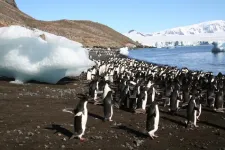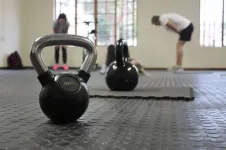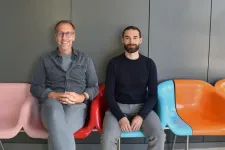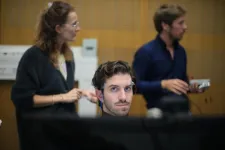(Press-News.org) MINNEAPOLIS – The amount of money people pay out-of-pocket for branded drugs to treat neurological diseases like multiple sclerosis (MS), Alzheimer’s, and Parkinson’s disease continues to rise, especially for MS drugs, according to a study published in the October 30, 2024, online issue of Neurology®, the medical journal of the American Academy of Neurology. The study found that average out-of-pocket costs for drugs for MS increased by 217% over a nine-year period.
Costs have dropped for medications where generic versions have been introduced.
“In some cases the out-of-pocket cost to patients has increased much more than the total cost of the drug, indicating that patients are taking on a disproportionate amount of the burden of these cost increases,” said study author Amanda V. Gusovsky, MPH, PhD of The Ohio State University in Columbus. “In other cases where generic drugs were introduced and the overall costs went down, the out-of-pocket costs to patients did not decrease, so they were not benefiting from these reductions.”
For the study, researchers examined costs of drugs for five common neurological diseases from 2012 to 2021 using a large private health care claims database. The study involved 186,144 people with epilepsy, 169,127 with peripheral neuropathy, 60,861 with Alzheimer’s or other dementia, 54,676 with MS and 45,909 with Parkinson’s disease.
MS drugs had the largest increase in costs, with the average out-of-pocket drug cost increasing from $750 per year in 2012 to $2,378 per year in 2021. All MS drugs had increasing out-of-pocket costs.
“MS medications costs remain exceptionally high and pose a substantial financial burden to people with this devastating disease,” Gusovsky said. “It’s imperative that we develop policy solutions such as caps on costs, value-based pricing and encouraging production of generic drugs to address this issue.”
The study found that the cost of several drugs for these diseases decreased by 48% to 80% in the years after a generic version of the drug was introduced.
Gusovsky said both neurologists and patients should consider the use of generic or biosimilar drugs where available to control costs. She noted that previous studies have shown that high costs can create burdens such as medical debt, skipping food or other essentials or not taking drugs as often as prescribed, which can possibly lead to complications and higher costs later.
A limitation of the study is that the data represents billed charges, which are an estimate of actual costs.
Learn more about brain health at BrainandLife.org, home of the American Academy of Neurology’s free patient and caregiver magazine focused on the intersection of neurologic disease and brain health. Follow Brain & Life® on Facebook, X and Instagram.
When posting to social media channels about this research, we encourage you to use the hashtags #Neurology and #AANscience.
The American Academy of Neurology is the world's largest association of neurologists and neuroscience professionals, with over 40,000 members. The AAN’s mission is to enhance member career fulfillment and promote brain health for all. A neurologist is a doctor with specialized training in diagnosing, treating and managing disorders of the brain and nervous system such as Alzheimer's disease, stroke, concussion, epilepsy, Parkinson's disease, multiple sclerosis, headache and migraine.
For more information about the American Academy of Neurology, visit AAN.com or find us on Facebook, X, Instagram, LinkedIn and YouTube.
END
Costs still on the rise for drugs for neurological diseases
2024-10-30
ELSE PRESS RELEASES FROM THIS DATE:
Large herbivores have lived in Yellowstone National Park for more than 2,000 years
2024-10-30
Large herbivores like bison or elk have continuously lived in the Yellowstone National Park region for about 2,300 years according to a new analysis of chemicals preserved in lake sediments. John Wendt of Oklahoma State University, U.S., and colleagues present these findings in the open-access journal PLOS ONE on October 30, 2024.
The near-extinction of bison in North America in the 19th and 20th centuries was a major ecological catastrophe and little is known about where and how these animals lived before European colonization. In the new study, researchers attempted to determine the dominant large herbivores that lived in the northern Yellowstone National Park ...
Antarctic penguin colonies can be identified and tracked from tourists' photos, using a computer model to reconstruct the 3D scene
2024-10-30
Antarctic penguin colonies can be identified and tracked from tourists' photos, using a computer model to reconstruct the 3D scene
###
Article URL: https://journals.plos.org/plosone/article?id=10.1371/journal.pone.0311038
Article Title: Penguin colony georegistration using camera pose estimation and phototourism
Author Countries: U.S.A.
Funding: This work was supported in part by the NASA Biodiversity Program (Award 317 80NSSC21K1027), and NSF Grant IIS-2212046. The funders had no say in the study design, data collection and analysis, decision to publish, or preparation of the manuscript. END ...
For patients with alcohol use disorder, exercise not only reduces alcohol dependence, but also improves mental and physical health, per systematic review
2024-10-30
For patients with alcohol use disorder, exercise not only reduces alcohol dependence, but also improves mental and physical health, per systematic review
###
Article URL: https://journals.plos.org/plosone/article?id=10.1371/journal.pone.0311166
Article Title: Effectiveness of exercise intervention in improving physical and mental status of patients with alcohol use disorders: A systematic review and meta-analysis
Author Countries: China
Funding: This study was funded by a grant from the National ...
Bones from Tudor Mary Rose shipwreck suggest handedness might affect collarbone chemistry
2024-10-30
Editor's Note: Please do not include the image originally uploaded with this release in any of your coverage as the licensing information has now changed. Please contact onepress@plos.org for any questions. Updated: October 30, 2024
A new study of human skeletal remains from the wreck of the 16th century English warship Mary Rose suggests that whether a person is right- versus left-handed may influence how their clavicle bone chemistry changes as they age. Dr. Sheona Shankland of Lancaster University, U.K., and colleagues present these findings in the open-access journal PLOS ONE on October 30, 2024.
The ...
Farewell frost! New surface prevents frost without heat
2024-10-30
Someday, people might finally say goodbye to defrosting the freezer or scraping frost off slippery surfaces. Northwestern University engineers have developed a new strategy that prevents frost formation before it begins.
In a new study, the researchers discovered that tweaking the texture of any surface and adding a thin layer of graphene oxide prevents 100% of frost from forming on surfaces for one week or potentially even longer. This is 1,000 times longer than current, state-of-the-art anti-frosting surfaces.
As an added bonus, ...
Similarities in brain development between marmosets and humans
2024-10-30
The development of primate brains is shaped by various inputs. However, these inputs differ between independent breeders, such as great apes, and cooperative breeders, such as the common marmoset (Callithrix jacchus) and humans. In these species, group members other than the parents contribute substantially to raising the infants from birth onwards.
A group of international researchers led by Paola Cerrito from the University of Zurich’s Department of Evolutionary Anthropology studied how such social interactions map onto brain development in common marmosets. The study provides new insights into the relationship between the timing of brain development ...
Can we protect nerve cells from dying?
2024-10-30
LEUVEN October 31st - Alzheimer’s disease is characterized by a progressive loss of nerve cells leading to a decline in memory and cognition. A team of researchers at KU Leuven and VIB explored the molecular sequence of events in this cellular demise and identified specific inhibitors that could prevent the loss of nerve cells in different mouse models of the disease. The findings open up new research avenues in the search for therapies that could halt or prevent the accumulation of brain damage occurring in ...
Why does Lake Geneva emit large quantities of CO2? UNIL scientists provide the answer and solve a scientific enigma
2024-10-30
Unlike oceans, lakes are significant emitters of CO₂. But why is this the case, and what mechanisms are at play? For the first time, UNIL scientists have successfully explained the complete carbon cycle in Lake Geneva, creating a model that can be applied to several of the world's largest lakes.
Contrary to previous beliefs, it is the natural erosion of rocks that is responsible for the significant CO2 emissions from Lake Geneva and many of the world's large lakes.
This study provides the missing piece for understanding the carbon cycle in lakes.
The LéXPLORE lake platform in Switzerland played a major role in this discovery of international ...
Double strike against blood cancer
2024-10-30
Unseen and ongoing, thousands of times every second: to keep a complex organism like humans alive, an immense number of new cells must be continuously produced. Up close, each of these cell divisions is nothing short of a miracle. Within just a few hours, not only must the entire genome – billions of “letters” long – be replicated, but most other cellular structures must be doubled so that, in the end, two complete daughter cells can emerge.
Just before division, two complex protein structures, known as centrosomes, emerge, forming two opposing poles in the mother cell. These centrosomes grow long protein filaments, the spindle apparatus, ...
Combining VR and non-invasive brain stimulation: a neurotechnology that boosts spatial memory without surgery
2024-10-30
As we age, it becomes more difficult to remember where things are—whether it’s recalling where we left the keys or where we parked the car. This spatial memory deteriorates further with the onset of dementia, a condition that someone in the world develops every three seconds, according to Alzheimer’s Disease International.
Researchers at two EPFL labs have joined forces to give a boost to spatial memory by creating a unique experimental setup that combines non-invasive deep-brain stimulation, virtual reality training, and fMRI imaging—all housed within Campus Biotech in Geneva. Published in Science Advances, the study demonstrates that targeted, ...







